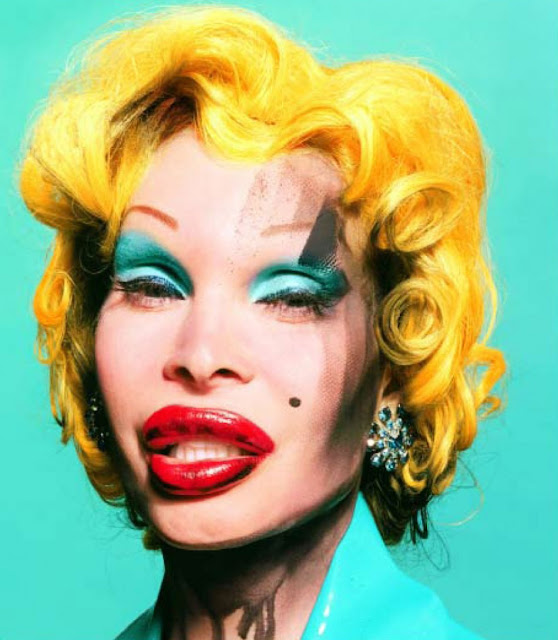“Mi
trabajo consiste en hacer dulces para los ojos. Se
trata de captar tu atención. A pesar de que mi trabajo aparece en revistas, siempre trato de hacer una imagen grande.
Quiero que mis fotografías se lean como un cartel.”
“My work is about making candy for the eyes. It’s about grabbing your
attention. Even though my work is appearing in magazines I am trying to make a
large picture. I want my photographs to read like a poster.”
“Si quieres realidad toma el autobús.”
“If you want
reality take the bus.”
“La
gente dice que las
fotografías no mienten, las mía lo
hacen.”
“People say photographs don't lie, mine do.”
“Entonces
tuve la siguiente idea en mi cabeza; de que las revistas eran como una galería, y si tomaste una página
arrancada de una revista y
alguien la pegó en su refrigerador, entonces eso era un museo, el museo privado de alguien.”
“Then I got this idea in my head that magazines were like a gallery and
if you got your magazine page ripped out and someone stuck it on their refrigerator,
then that was a museum, someone’s private museum”.
“Estaba
trabajando en este
estilo muy rimbombante. Realmente no sabía de estilo. No pensé en ello: hice aquello en lo que estaba
interesado, lo que me cautivó,
lo que me atrajo. Fui atraído por el color, y me sentí atraído por el
humor, y me llevó a la sexualidad y la espontaneidad. Fue todo muy intuitivo. Nunca
realmente pensé ‘bueno, esto es el estilo...”
“I was working in this very bombastic style. I didn’t really know about
style. I didn’t think about it: I did what I was interested in, what I was
attracted to, what I was drawn to. I was drawn to color, and I was drawn to
humor, and I was drawn to sexuality and spontaneity. It was all really
intuitive. I
never really thought ‘well this is the style…”
“Sólo haz lo que amas, y luego el estilo aparece más adelante.
La gente junta todo y decide que es lo tuyo. Sin embargo, algunos días te
despiertas y eres feliz y algunos días te despiertas y estás triste, algunos
días te despiertas y te sientes enojado por cosas ... si se puede traducir eso
a través de tu trabajo, y expresar aquellos
sentimientos, eso está bien como un artista. No vi ninguna diferencia
entre ser un fotógrafo o un artista. No hice esas diferencias. Si alguien
quiere pensar que es arte, eso es genial, pero voy a dejar que la historia
decida.”
“You just do what you love, and then a style happens later on. People
put it together and decide it’s yours. But some days you wake up and you’re
happy and some days you wake up and you’re sad, some days you wake up and
you’re feeling angry about things… if you can translate that through your work,
and express those feelings, that’s okay as an artist. I didn’t see any
difference between being a photographer or being an artist. I didn’t make those
boundaries. If someone wants to think it’s art, that’s great, but I’ll let
history decide.”
“Quería
proporcionar una ruta de escape, quería tomar imágenes que fueran fantásticas y
te llevé a otro mundo, uno que era más brillante. Empecé con esta idea.”
“I wanted it to provide an escape route, I wanted to make pictures that
were fantastic and took you into another world, one that was brighter. I
started off with this idea.”
“Es
mucho más difícil trabajar
para uno mismo, por sí mismo, en vez de crear trabajo para una galería, ya que no hay límites y puedes hacer lo que quieras. Siempre es más fácil cuando tienes un parámetro, cuando se tiene un límite. Puedes trabajar dentro de los límites y empujar y caminar la
línea, pero cuando no te dan
absolutamente ningún límite, es más difícil. Debes pensar realmente. Es más desafiante.”
“It’s much harder to work for yourself, by yourself, than to create work
for a gallery, because there are no limits and you can do anything you want.
It’s always easier when you have a parameter, when you have a limit. You can
work within the limit and push it and walk the line, but when you’re given
absolutely no limits, it’s harder. You must really think.
It’s more challenging.”




















































+005.jpg)


.jpg)

















No hay comentarios:
Publicar un comentario